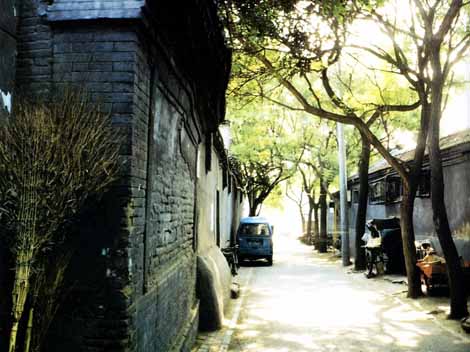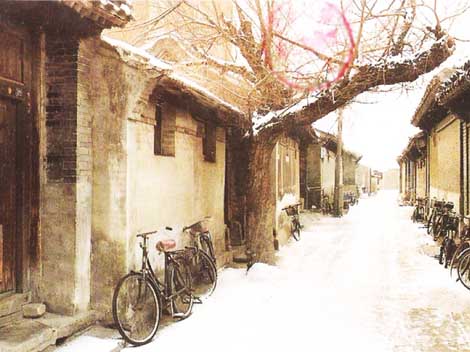Chinese Way
Beijing Hutongs
Updated: 2011-03-14 17:07
(cultural-china.com)
Hutong refers to lanes and alleys between the Siheyuan (courtyard with buildings on four sides) residences in Beijing, spreading over every corner of the old city. The dotted hutongs are unique scenery in Beijing profoundly related to the Siheyuan, which, together outlining the casual and charming life of the common people in the old city.
 |
Hutong is a transliteration from Mongolian bearing the meaning of walking ground, which has been passed down ever since the construction of Dadu (the capital of Yuan Dynasty, today’s Beijing) in 1267. The old hutongs, the fruit of the ancient history of Beijing, have existed for over 700 years till now. After a world of changes through centuries, they have become a symbol of life for People in Beijing.
The ancient city, Beijing, was built according to the blueprint of square checkerboard city arrangement through deliberate planning. Therefore, the hutongs in Beijing are mostly built facing due east, west, south or north, constituting a strictly square layout of the city. Moreover, the Siheyuan residences are all facing south in an array, therefore the hutongs are usually in east-west direction instead of the south-west direction.
 |
The hutongs of various sizes in Beijing reached as many as 7000-odd in number, each featuring an anecdote or story. A variety of names are given to the hutongs, some named after a figure, such as the Wen Chengxiang Lane (the Lane of Grand Councilor Wen), some after a marketplace or commodity, such as the Goldfish Lane, or named according to the Beijing dialect, such as the Menhuluguan Lane (the Lane of Piggy Bank) etc.
The oldest hutong in Beijing is called Sanmiao Street. It enjoys a history of more than 900 years! The longest one is the Dongxi Jiaomin Lane with a length of 6.5 li, while the shortest is merely a dozen meters. The narrowest one shall be the Qianshi Lane in Dashilan’er area of Qianmen, which is as narrow as 0.7 meter.
Specials

'Super moon'
The "Super Moon" arrives at its closest point to the Earth in 2011.

Radiation test
The probability of being exposed to a life-threatening level of radiation is quite slim.

Panic buying of salt
Worried Chinese shoppers stripped stores of salt on radiation fears.